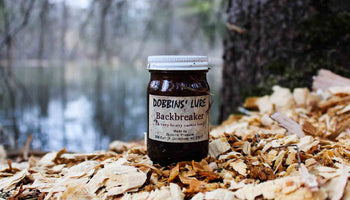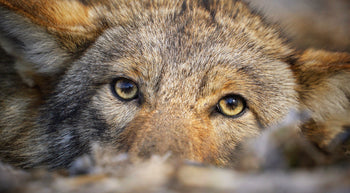

Different types of Attractants
When you start looking at all of the attractants that are available for trapping furbearers it can be overwhelming. Commercial lure makers have a wide variety of options from gland lures to trailing scents, so how do you know what to buy? The best thing you can do is learn what each type of attractant is for, how the target animal normally responds to it, and how to best use it on your trapline. Below is a list of different types of responses that an animal may have to the different type of attractants.
Curiosity Response
There are lots of lures on the market classified as curiosity lures. These lures normally contain ingredients that spark the animals curiosity and cause it to work a set. An example would be a bobcat lure with catnip as one of the ingredients.
Hunger Response
This is a fairly straight forward as furbearers spend a large portion of their time hunting or foraging for food. A food lure, bait, trailing scent, or fish oil are all examples of something that can be used to stir up a hunger response and get the animal to work your set.
Breeding/Territorial Response
Gland lures and urine are an awesome choice when targeting canines as they are very territorial animals. They have boundaries separating them from other groups and get aggressive if they think those have been crossed. An example of where a territorial response is highly effective is when using castor mounds for beaver or a scent post with a gland lure and urine for canines.
Visual Response
This can be a wide variety of things that cause the animal to investigate your set. Dirt spread out at a dirt hole set, a cow bone, sheep's wool, feathers, flagging for bobcats, or a peeled poplar stick for beaver are all examples of items that cause a visual response.
Layers of Attraction
With the basics of the responses laid out, you need to decide which lure or bait to use at the set. This is a personal preference and takes time to develop what will work best for you. That being said, most trappers are going to apply multiple attractants at a given set.
For instance, dirt hole set could have sheep's wool with bait on it in the hole, a gland lure tucked behind the dirt hole, and urine on the backing.
This combo has three layers of smells. The bait is targeted towards hunger, the gland lure and urine towards their territorial instincts, and the sheep's wool as not only a curiosity smell but also a visual attractant.
The goal with this is that the layers of attractants will cause the animal to not only work your set but stick around longer which increases the chance of catching the animal. The different attractants can not only be used at a single set but also put into practice when setting multiple sets in one area.
For instance, if you have two coyote sets in a field corner, it is a wise move to run different lure and bait combinations at each set. If the animal isn't interested in one set, hopefully the change up in the other will entice it enough to investigate it further.
This simple practice can increase your odds with very little if any added effort on your part.
Another style of lure is a long call lure, which can trigger either hunger or curiosity in the animal. Long call lures are normally louder (more potent) than regular lures. Most of the time this is achieved by having skunk quill as one of the ingredients in the formula. Long call lures are extremely effective in cold weather for attracting coyote, fox, bobcat, weasel, fisher, and marten. Normally you use a lure like this on a twig above your set to call them in from a distance. Once the animal has been called in, the bait and possibly a secondary lure will get him to further investigate and work the set.
That being said, don't over complicate it by carrying around a five-gallon bucket of lures and baits with you to every set. A few good quality baits and lures that have been proven to work and cover the different bases is all you need. If you sit and spend time rummaging around trying to find what lure to use at set, you have to many with and you're just wasting time. If you're still not sure what lures to purchase, call the trapping supply house of your choice and ask them what they sell the most of and what their personal favorites are. That will get you started on the right foot with quality products.
Storing Trapping Lures, Baits, and Urine
The best way to store your bottles of lures and bait are in a cool place away from direct sunlight.
Make sure the caps are on tight so that the contents don't get too dried out making them hard to use. If this does happen most of the time you can pour some glycerine in and stir it good, making them usable again.
The ingredients that are used in lures and baits will determine how long they are good for. Stuff like glands, meat, and sweet smells will last a long time without losing much for calling power.
Long distance call lures with skunk quill being an important ingredient will lose its skunky smell overtime. That being said, if it's a quality LDC lure the other ingredients it will still be attractive to animals.
Urine can be more of an issue to store from season to season. The big thing is making sure that like the lure and baits, it is out of the sunlight and the cap is sealed on tightly. You will also want to store it in a bottle with as little air in it as possible. If you have sixteen ounces of urine in the bottom of a gallon jug it will go bad far quicker than if you had it in a pint bottle with minimal air in it. If the urine smells bad from sitting over the summer, you're probably best off throwing it away and using some fresh stuff. But if stored correctly you should be able to use it the following season without any issue.
Quick Tip
How to Freeze Proof Urine
To prevent your urine from freezing during the winter, simply mix three parts urine to one part glycerine. The glycerine will act as an antifreeze and make it freeze proof down to temperatures well below zero.




